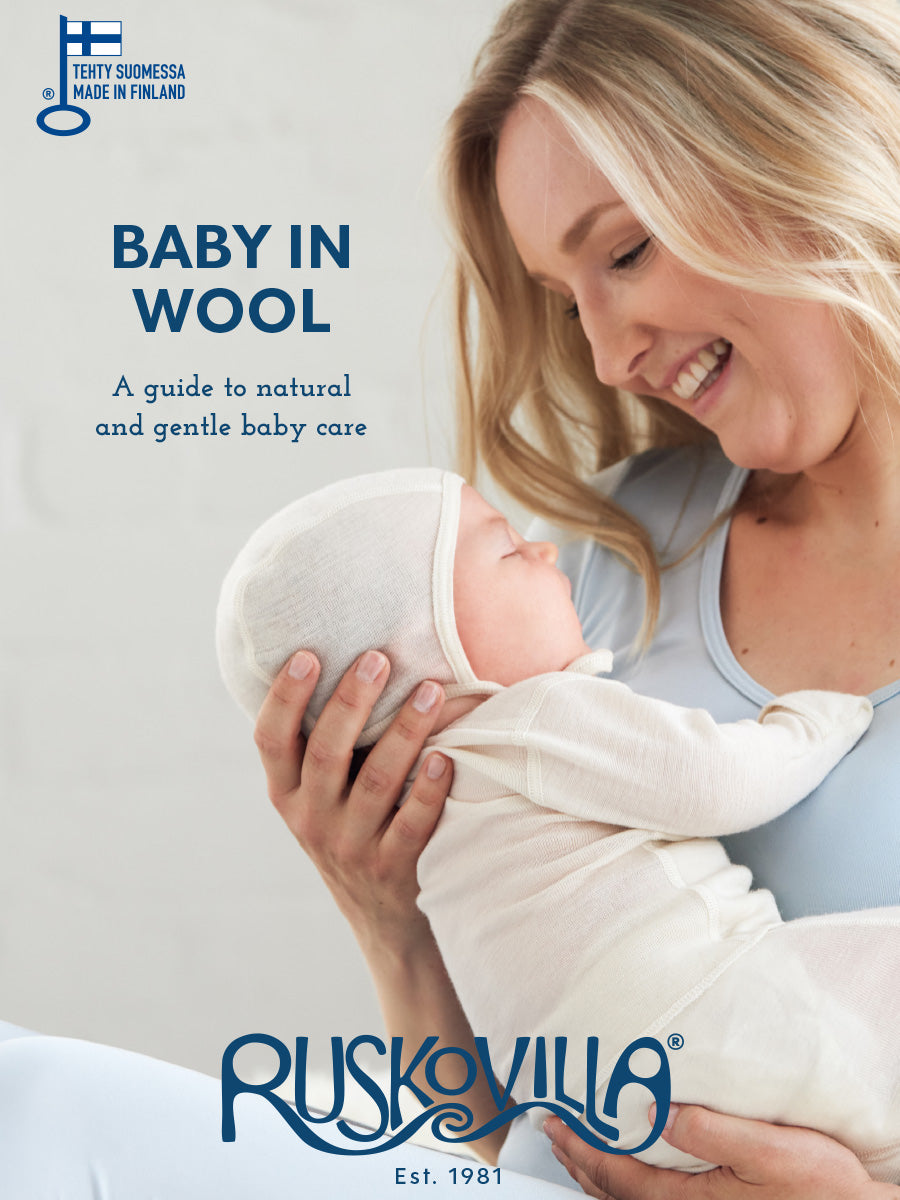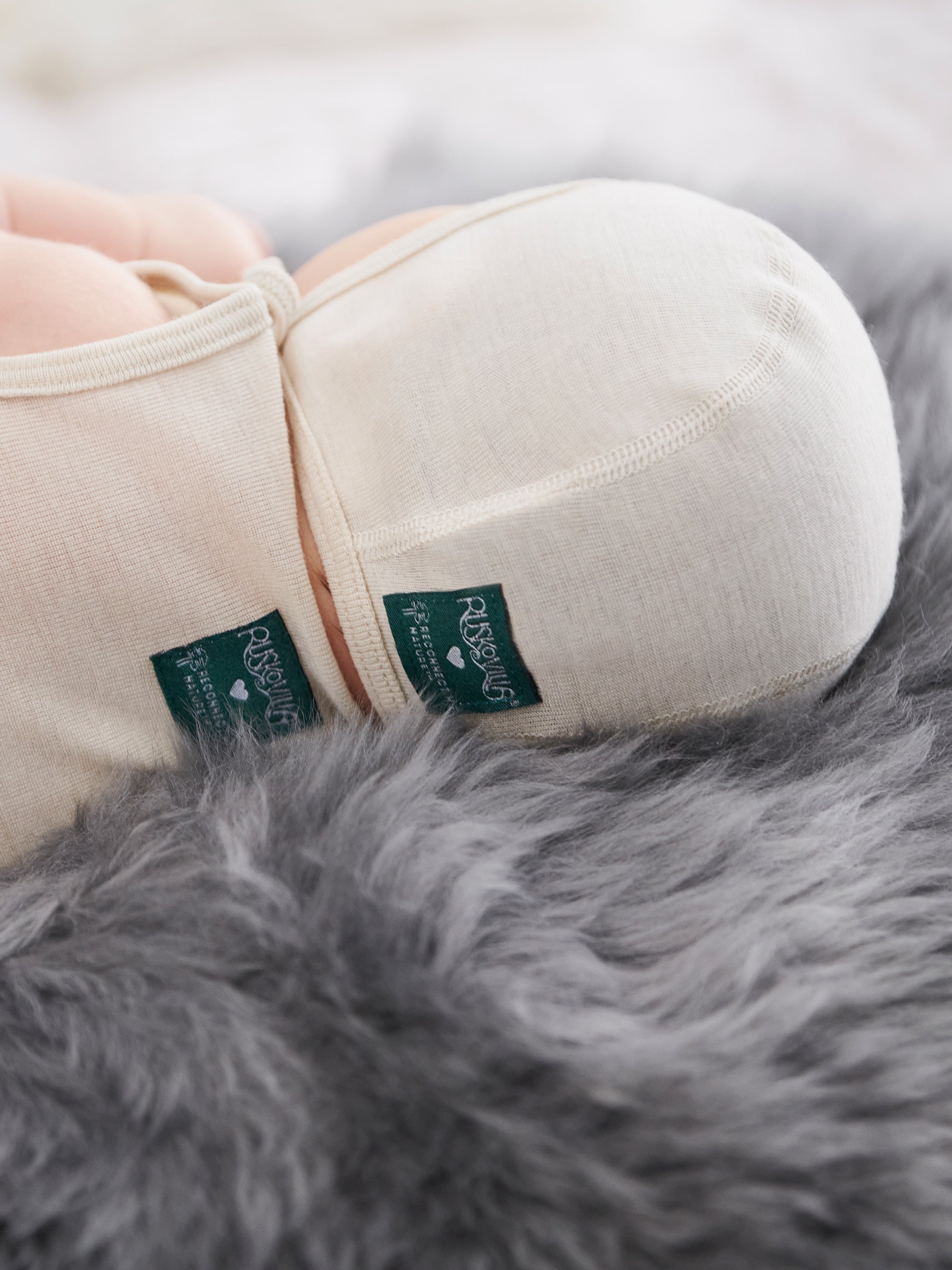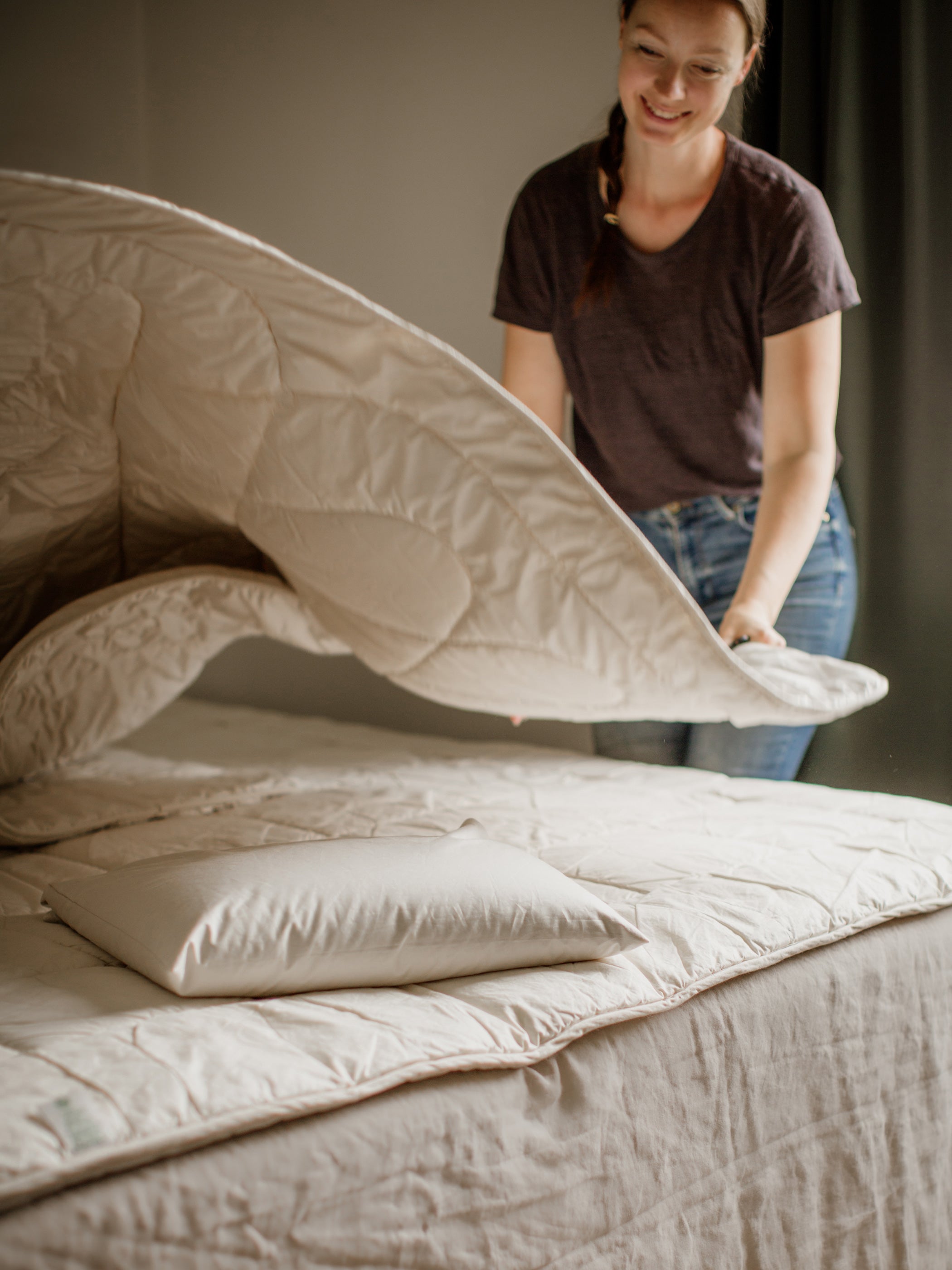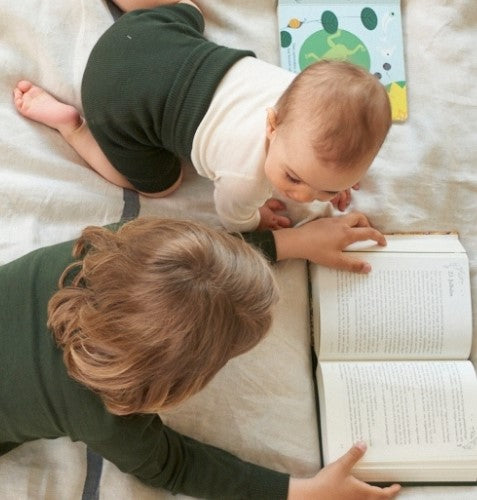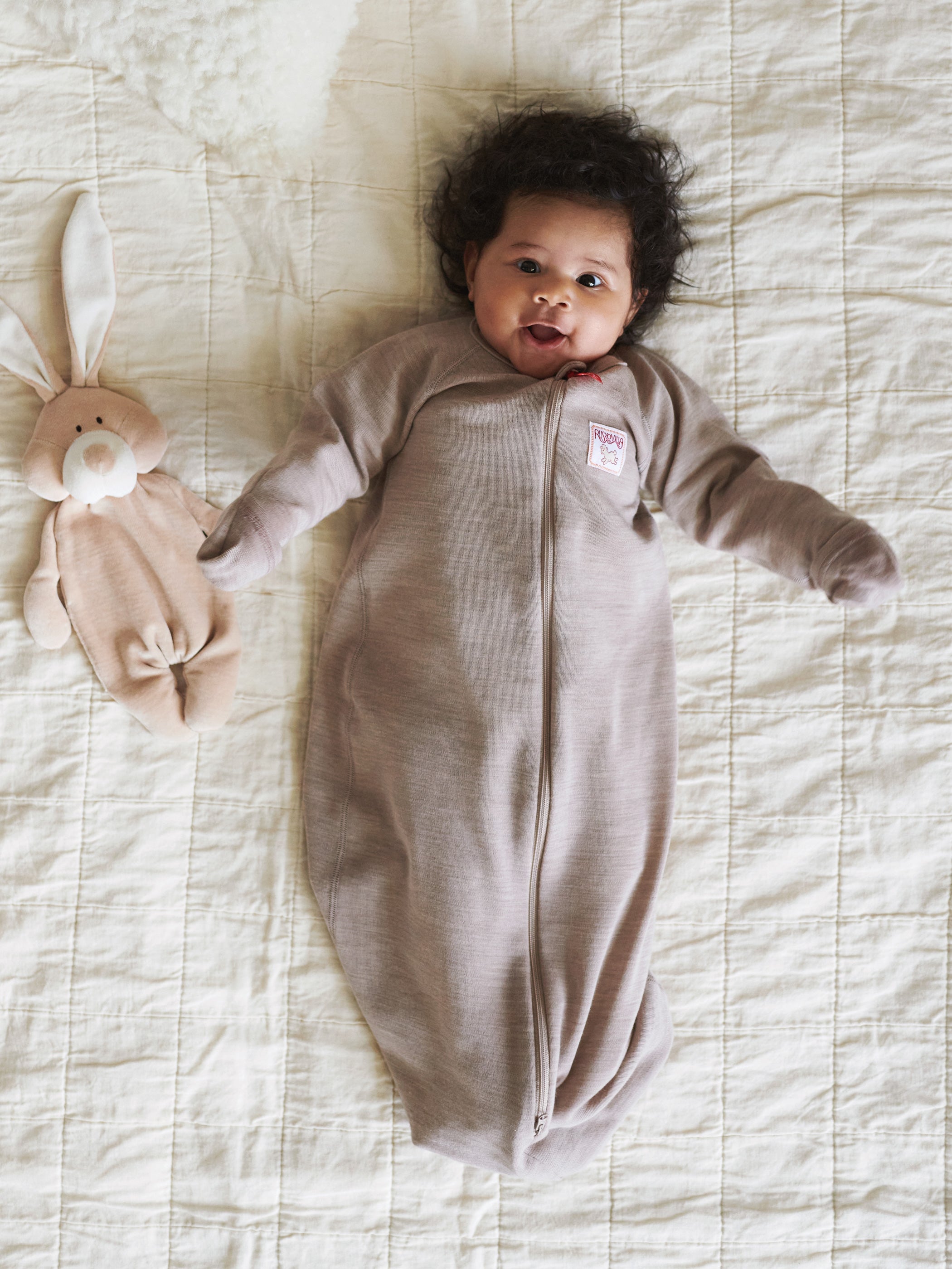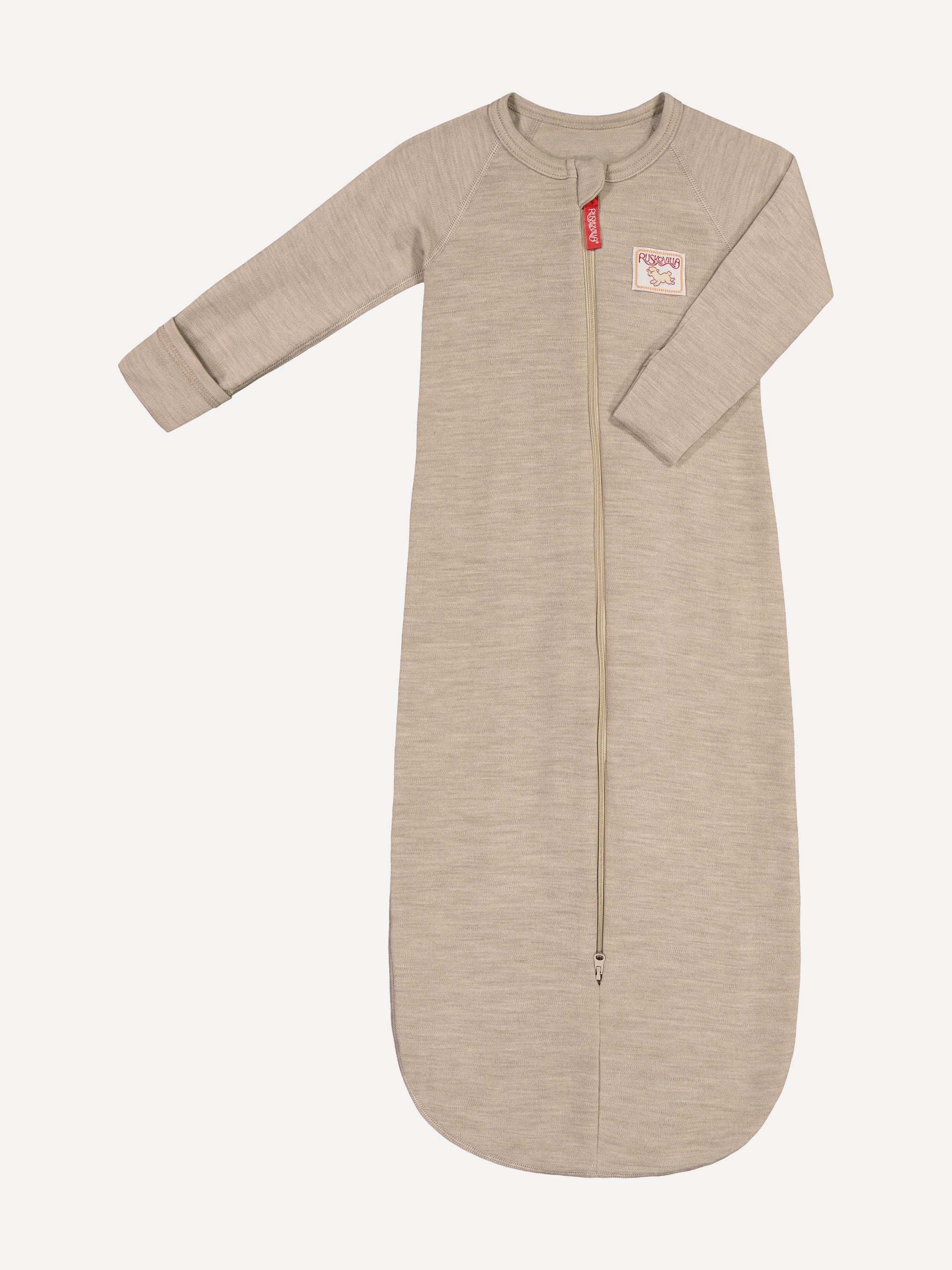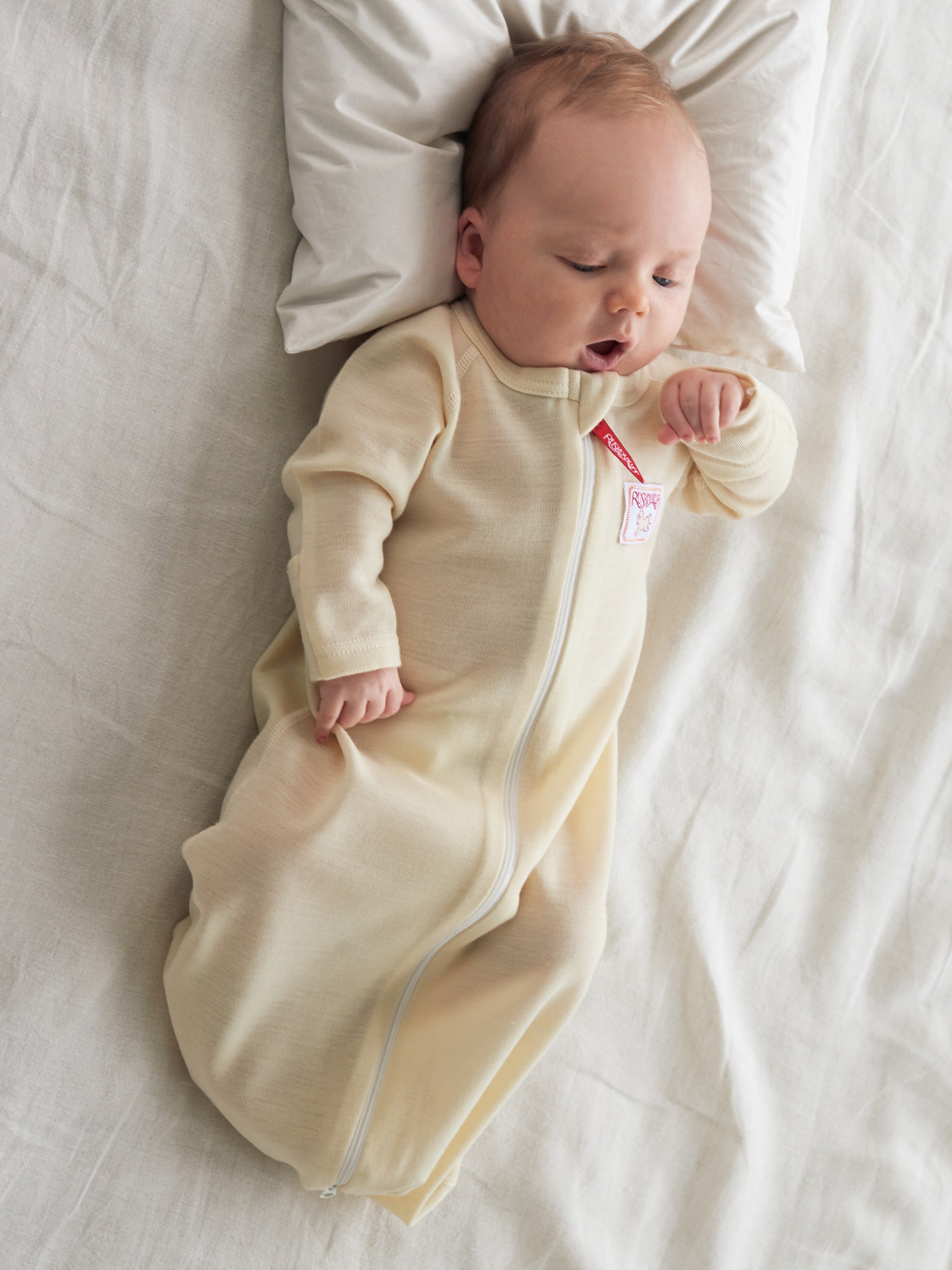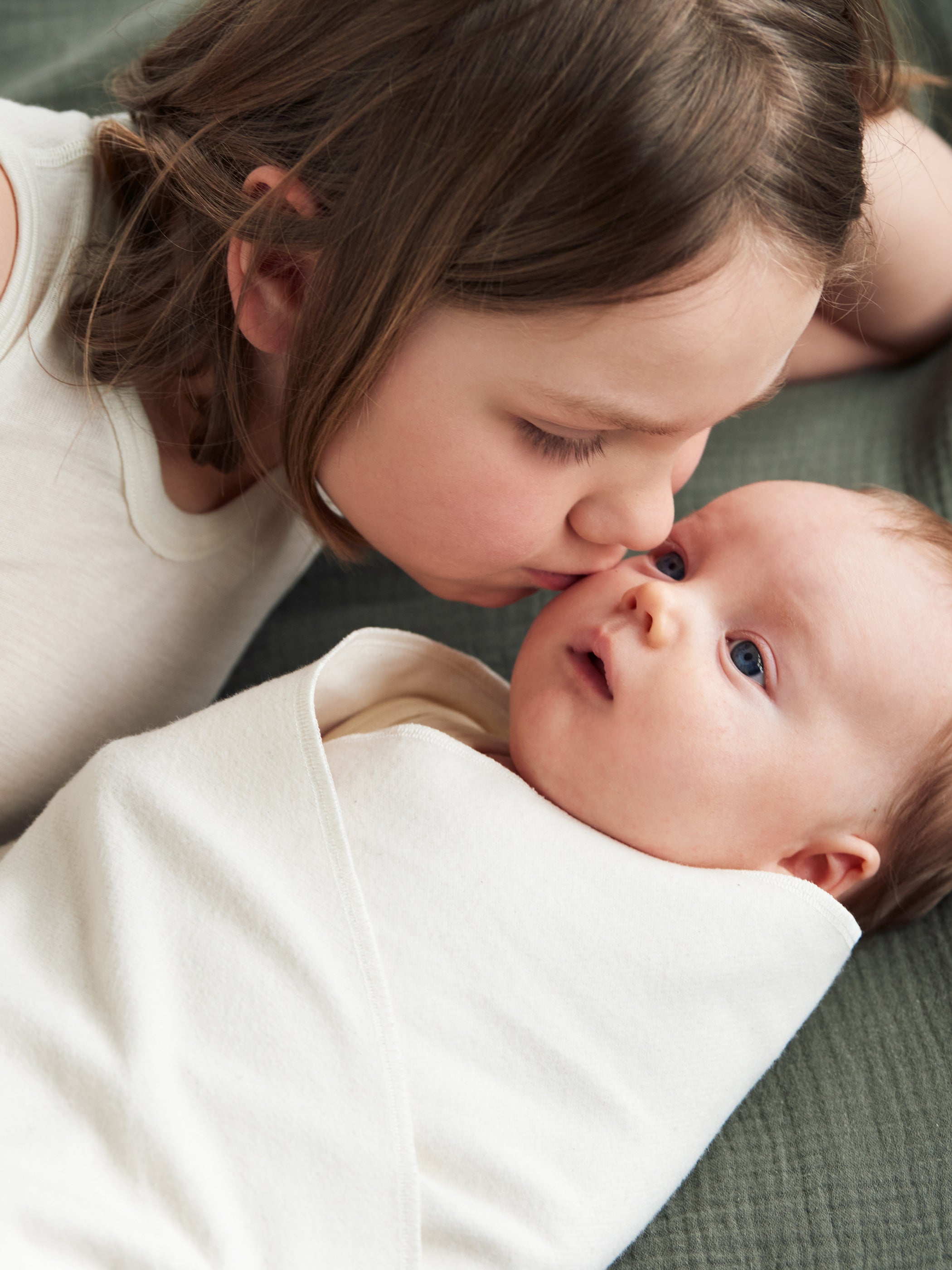As a pediatric sleep consultant, I work with many families looking for personalized guidance and support for their baby’s sleep challenges. With my background in advanced CBT-I insomnia therapy, pediatric sleep coaching, and public health nursing, I support parenting that aligns with the family’s values and encourage changes that help improve both night and daytime sleep. The goal is always the same: peaceful sleep for the whole family.
This blog post explores the most common baby sleep challenges and offers practical solutions to overcome them. The author, Erika Ilomäki, is an advanced-level CBT-I insomnia therapist, pediatric sleep coach, and public health nurse.
Why isn’t my baby sleeping? Common sleep challenges and how to solve them
Sleep challenges in babies and young children are very common. Especially during the first year and toddler phase, sleep can be fragmented or difficult in many households. Ongoing sleep issues not only affect the child but can also cause significant sleep deprivation for the parents. For babies, poor or insufficient sleep can impact healthy growth and development.
Trouble falling asleep
Many families struggle at times to get their baby to sleep. Trouble falling asleep can stem from an inconsistent sleep-wake rhythm, overtiredness, hunger, discomfort, or external stimuli. Babies also often wake up during the night to feed, and some have difficulty falling back asleep afterward.
Gentle swaddling can help some babies settle and prevent sudden wake-ups due to movement. Establishing a calming bedtime routine—such as a bath, massage, or soft music—can help signal that it’s time to sleep.
Creating a calm and secure sleep environment is also important. Dim lighting and minimal noise can help promote sleep.
 Night wakings
Night wakings
It’s natural for babies to wake during the night, especially in the early months when they need to feed often. Their tummies are small, so they eat small amounts frequently, even overnight. Their sleep rhythms are still developing, and their sleep cycles are shorter than adults'. Most babies will begin to sleep longer stretches at night as their sleep patterns mature and they no longer need night feeds.
At night, try to keep lights dim and the environment calm to help your baby understand it’s still sleep time. A familiar sleep garment or a sleep sack can also provide comfort and consistency.
The sleep sack – for safer, more comfortable sleep
A sleep sack is one of the safest and most effective tools for helping babies sleep well. Designed to allow natural movement while creating a cozy, secure environment, sleep sacks can support deeper and more peaceful sleep.
According to the Nursing Research Foundation of Finland sr (NRF), all soft items such as pillows, blankets, and stuffed toys should be removed from the baby’s sleep area.
Instead of loose bedding, layer clothing to keep baby warm. Wearable blankets like sleep sacks can be used—but must be properly sized and used as directed to ensure safety.
Benefits of a sleep sack include:
- Temperature regulation: Keeps baby warm without overheating, helping them sleep longer.
- Safety: Prevents baby from pulling blankets over their head, reducing the risk of suffocation. The correct size is crucial.
- Comfort: Many babies find the snugness comforting, mimicking the secure feeling of the womb.
Ruskovilla’s long-sleeved baby sleep sack is made of soft 100% organic merino wool. Wool supports restful sleep and helps regulate body temperature—it’s warm but breathable. The sleep sacks are hand made in Artjärvi, Finland. The long-sleeved design includes a two-way zipper for easy diaper changes, and fold-over mittens on sizes 50 cm and 70 cm for added warmth. Depending on room temperature, it can be worn over pajamas or directly on the skin.
Fussiness and crying
Some babies experience frequent crying spells, especially in the evenings, for various reasons.
Gentle rocking or soothing white noise can help calm a fussy baby. If you're breastfeeding, you may consider your diet—certain foods may cause gas or discomfort. The Happiest Baby method is another effective way to soothe crying babies.
Swaddling for fussy babies
Developed by pediatrician Dr. Harvey Karp, the Happiest Baby method is a well-known technique to calm crying babies. It can be used from around two weeks of age up to 3–4 months. Always ensure your baby’s basic needs (feeding, sleep, warmth, a dry diaper, and closeness) are met before using the method. The five steps include:
- Swaddling
- Side/stomach position´
- Shushing or white noise
- Gentle swinging or jiggling
- Sucking (pacifier or breastfeeding)
Swaddling is the most important step. If it alone isn’t enough, try combining it with the other calming techniques.
Swaddling
A snug swaddle can help calm a restless baby by mimicking the secure feeling of the womb. Ruskovilla’s swaddle cloth is made from soft, organic flannel cotton—undyed, untreated, and gentle even on sensitive skin. It’s handmade in Artjärvi, Finland.
At first, babies might resist swaddling, but with practice and the right moment, it can become an effective tool for calming.
Always make sure baby doesn’t overheat—feel the back of the neck to check for warmth. Avoid using any loose blankets or pillows near the baby’s face to reduce suffocation risk. Stop swaddling when the baby begins to show signs of rolling over from back to stomach.
Day-Night confusion
Newborns often can't distinguish between day and night, which can lead to sleep difficulties. Around three months, babies begin to develop a more regular sleep-wake rhythm.
To help establish this rhythm:
- Keep the baby in well-lit spaces during the day and involve them in daily family life.
- In the evening and at night, dim the lights and keep the environment calm and quiet.
- Interact and play during the day, but remain calm and quiet at night so the baby learns to associate nighttime with sleep.
Sleep challenges are normal – and often only temporary
Sleep challenges in babies are very normal—but they can still be stressful for parents. Most issues are temporary and manageable with practical solutions that support both baby and family.
A consistent evening routine, appropriate sleep rhythm, safe sleeping bag, and calm environment can go a long way in improving baby sleep. And if challenges persist, help is always available through professional sleep guidance.
Sources used in the blog post:
Nursing Research Foundation of Finland sr (NRF), 2024. How to promote safe infant sleep? https://hotus.fi/wp-content/uploads/2024/10/nayttovinkki-10-2024.pdf
Karp, H. (2015). The Happiest Baby on the Block (2nd ed.). New York: Random House US.
Translated by: Elina Botha
Read also our Baby in Wool guide with tips on gentle and natural baby care. You will also find step by step swaddling instructions in the guide.



